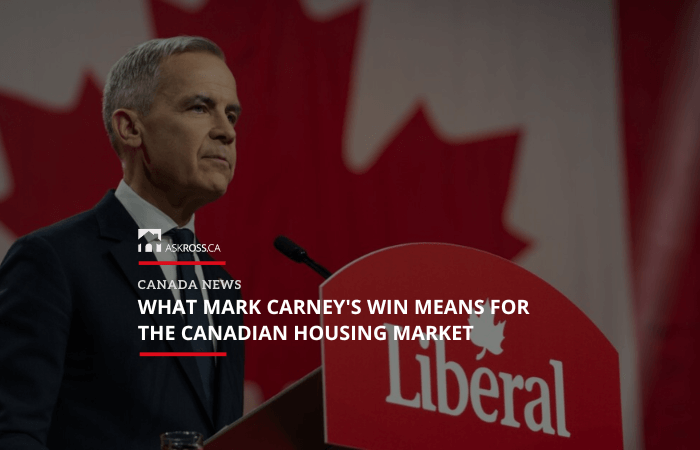
Published: May 1st, 2025 • Last Updated: June 3rd, 2025
Author: Ross Taylor on AskRoss.ca
How Will the 2025 Canadian Federal Election Impact the Housing Market?
The dust has barely settled since the 2025 federal election, and Canadians are already wondering what it all means, especially for our notoriously troubled housing market.
With Mark Carney and the Liberal Party securing a minority, the country’s political direction has changed, and so too might the landscape for buyers, sellers, and real estate investors.
Housing was front and centre in this election, and for good reason. The affordability crisis has evolved from a simmering issue to a full-blown emergency, and voters have made it clear that they want action.
But now that the campaign promises are behind us, it’s time to take a hard look at what this new government could mean for our homes, our mortgages, and our financial futures.
Jump to a specific section in this article ↓↓
- What is the current state of Canada’s housing market?
- What housing policies has Mark Carney’s Liberal government promised?
- How did the Conservatives’ housing plan compare?
- How could these election results reshape the housing market?
- Five predictions for Canada’s housing market
- What should Canadians be watching closely now?
- Your post-election real estate checklist
- The Trump wildcard and where housing fits in the big picture
- Looking ahead at Canada’s housing market
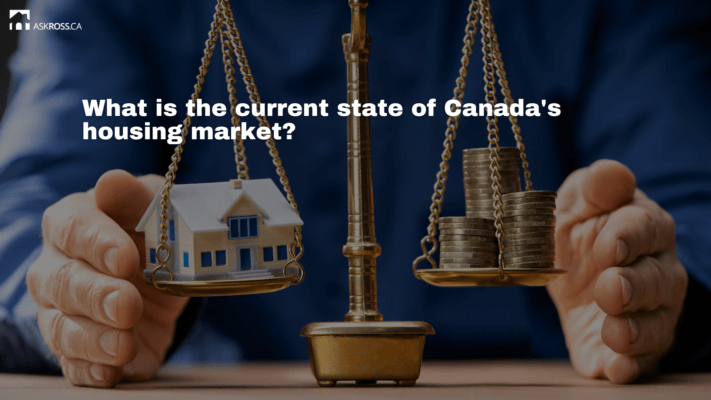
What is the current state of Canada’s housing market?
Before we talk about where we’re going, let’s ground ourselves in where we are. The Canadian housing market is in a deeply unaffordable state. Prices have soared in cities like Toronto and Vancouver, while wage growth has lagged far behind.
Inventory is tight, construction is sluggish, and a whole generation of Canadians is watching homeownership drift further out of reach.
This isn’t just a Toronto or Vancouver problem. It’s become a national issue, and it was one of the defining themes of the 2025 federal election.
Every major party made housing a cornerstone of their platform, reflecting just how widespread the crisis has become.
↑↑ Back to the list at the top ↑↑
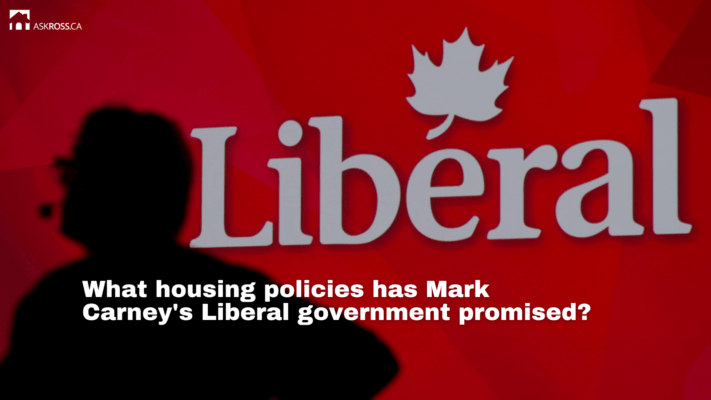
What housing policies has Mark Carney’s Liberal government promised?
With Mark Carney at the helm, the Liberals have rolled out an ambitious housing strategy. On paper, it reads like a multipronged attack on the affordability crisis, with an emphasis on building more homes and making it easier for first-time buyers to get into the market.
Here are the key Liberal housing proposals
GST exemption for first-time buyers
- First-time homebuyers could soon see relief at the register with a full GST exemption on new home purchases. That’s a decent chunk of change on a $600,000 or $700,000 home.
Doubling non-profit and community housing
- The Liberals aim to double Canada’s supply of co-op and non-profit housing. They’re pledging four million new homes by 2035—an eye-popping number that suggests they’re serious about the supply side of the equation.
Reducing red tape
- The federal government plans to collaborate with municipalities to reduce the bureaucratic clutter that slows down housing development.
- If done right, this could mean faster approvals, lower costs, and more homes hitting the market sooner.
Incentivizing innovation and skilled trades
- Expect to hear a lot more about modular and prefabricated construction. The government wants to invest in faster, more cost-efficient ways to build.
- They’re also putting money into skilled trades training to expand the workforce we need to meet these goals.
Construction tax breaks
- Developers may benefit from targeted tax reductions that encourage new building starts. Whether those savings get passed on to buyers is another story, but it’s designed to unlock stalled projects.
↑↑ Back to the list at the top ↑↑
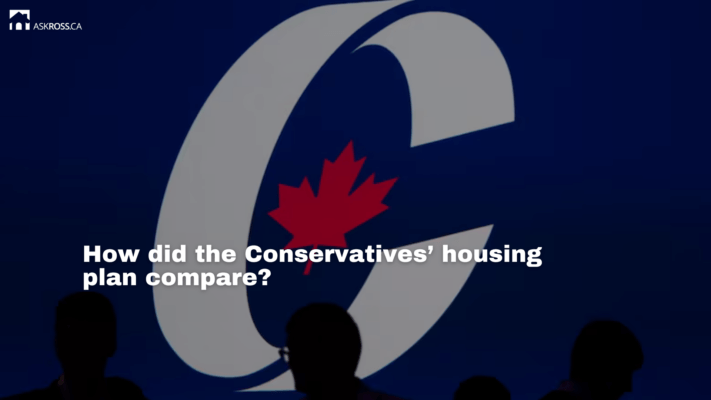
How did the Conservatives’ housing plan compare?
Pierre Poilievre and the Conservatives took a more aggressive, market-driven approach. Their big idea was a full GST exemption on new homes up to around $1.3 million—for everyone, not just first-time buyers.
They also pledged to cut federal funding to cities that don’t build enough homes, incentivize density near transit hubs, and slash municipal bureaucracy by targeting what Poilievre called “gatekeepers” of housing development.
Both parties promised to tackle supply. The difference lies in how—and how quickly—they expect results.
↑↑ Back to the list at the top ↑↑
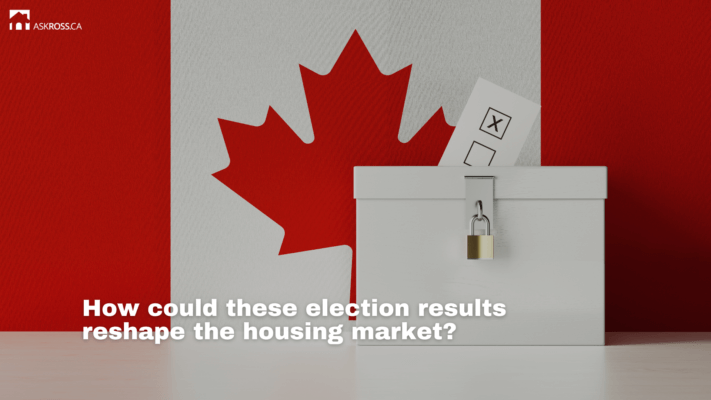
How could these election results reshape the housing market?
The real estate market doesn’t operate in a vacuum—it reacts to policy, political signals, and economic leadership. Carney’s arrival introduces a new layer of strategy that connects housing to broader financial and economic planning.
5 predictions for the Canadian housing market
1. Supply-side strategy could ease pressure, eventually
- Doubling non-profit housing and fast-tracking modular builds are long-term plays. If the Liberals deliver on their promises, we could see a meaningful shift in supply over the next decade. But let’s be real—it’s going to take time.
- Building four million homes isn’t something you do overnight, even with political will and good intentions.
2. Investor confidence is likely to return
- The election created a cloud of uncertainty that had developers and investors holding their breath. With a minority Liberal government now in place and Carney’s reputation for economic discipline, we can hope for a more stable investment environment.
- That clarity alone might help spur some long-stalled projects back into action.
3. First-time buyers may finally catch a break
- If the GST exemption rolls out as promised, first-time buyers could see real savings. Combine that with increased supply down the road, and we may start to see some barriers come down, especially for younger Canadians trying to find their footing in this market.
4. Expect regional disparities
- Let’s not kid ourselves: housing markets across Canada are wildly different. Toronto’s problems aren’t the same as St. John’s or Saskatoon’s.
- The effectiveness of any federal policy will depend on local conditions, municipal cooperation, and how each province aligns with Ottawa’s priorities.
5. A more coordinated, long-term economic approach
- Carney’s economic pedigree having led both the Bank of Canada and the Bank of England suggests he’s not likely to silo housing off as a standalone issue.
- Instead, I expect to see better integration between housing, lending practices, interest rate strategy, and fiscal spending.
- This could help bring a level of stability and predictability we haven’t seen in recent years.
↑↑ Back to the list at the top ↑↑
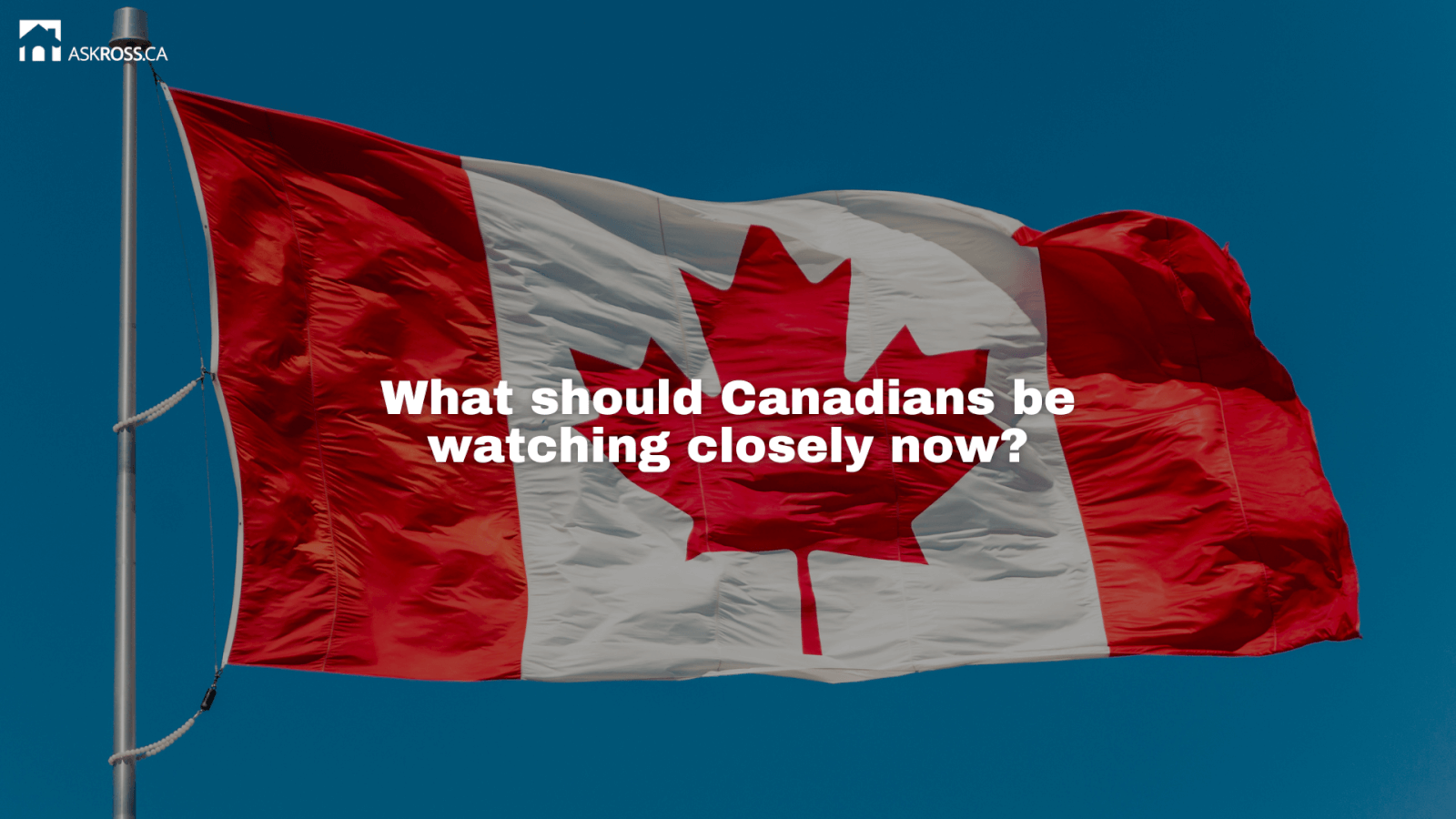
What should Canadians be watching closely now?
We’re in a transition period. A new government with a new set of ideas means a new housing playbook is coming—but it won’t happen overnight. Whether you’re buying, selling, or renewing your mortgage, you need to stay sharp.
Your post-election real estate checklist
- Track the timelines: Most of these housing promises will take months or even years to implement.
- Understand the three-tiered government dynamic: A federal strategy is only as effective as its alignment with provincial and municipal policies.
- Be realistic about affordability timelines: Even if we get the supply boost we need, affordability won’t return overnight.
- Watch the mortgage and lending environment: Changes in policy may impact borrowing limits, rate trends, and qualification rules.
- Make personal decisions in context: Policy shifts are important, but your own financial health and goals should always be the deciding factor.
↑↑ Back to the list at the top ↑↑

The Trump wildcard and where housing fits in the big picture
Now, let’s talk about the elephant in the room. The top priority for Carney’s government right now? It’s not housing. It’s managing Canada’s economic stability amid intensifying U.S. tensions, particularly Donald Trump’s trade war threats and inflammatory talk about annexing Canada. Yes, you read that right.
Carney’s background as a central banker is exactly why voters gave him the keys—to steady the ship, keep markets calm, and shield Canada from external economic shocks.
Housing, while urgent, will have to fight for attention alongside tariffs, inflation control, and job protection. Still, there’s reason to stay optimistic.
Carney isn’t new to complex risk environments. He understands financial systems and how fragile markets can be. If mortgage-related instability starts bubbling up, whether through rising defaults, overleveraged borrowers, or strained lenders, he won’t let it fester. This could mean greater scrutiny of private and alternative lending, as well as tighter oversight from OSFI, Canada’s financial regulator.
Bottom line? Carney knows how quickly housing issues can snowball into broader economic problems. So while it may not be priority number one, he’s got the tools and the motivation to act quickly when needed.
↑↑ Back to the list at the top ↑↑
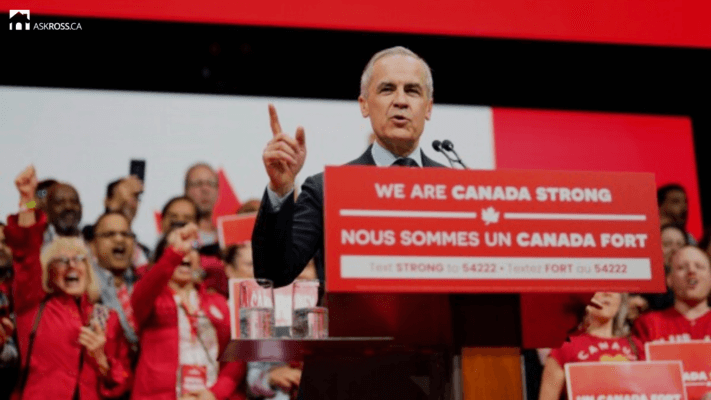
Looking ahead at Canada’s housing market
The 2025 election was a referendum on housing as much as anything else. Canadians demanded bold action, and the Liberals have responded with an ambitious roadmap. Whether it works as intended will depend on execution, and let’s be honest, governments don’t always hit their marks.
But the direction is clear: more supply, more support for first-time buyers, and more coordination between levels of government. If you’re in the market, it’s not time to panic—but it is time to pay attention.
As always, my advice is to keep your financial fundamentals strong. Stay informed, don’t overextend yourself, and if you’re unsure about your next move, talk to someone who lives and breathes this stuff every day.
Got questions? My team and I are here to help.
↑↑ Back to the list at the top ↑↑

Ross Taylor Mortgages
If you want great service from someone you can trust – reach out to us today.
Get quick answers to your questions, no matter how difficult – 7 days a week.

 Apply For a Mortgage
Apply For a Mortgage